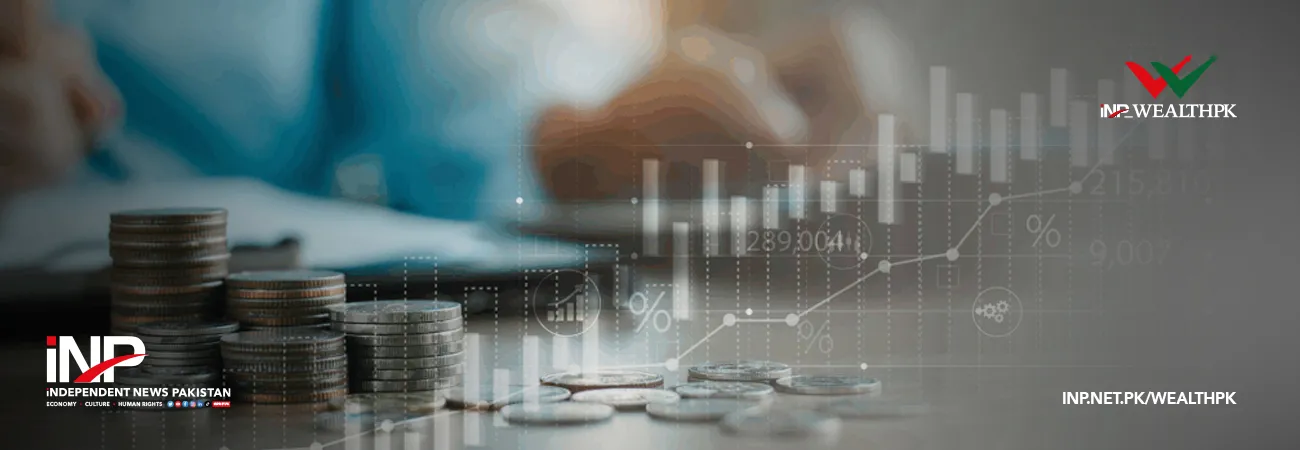INP-WealthPk
By Muskan Naveed
ISLAMABAD, Oct. 26 (INP-WealthPK)- Many economists term the ongoing debt crisis a major problem plaguing the country. However, we shed a light on whether debt in itself is a problem or not, and whether Pakistan faces it at the moment.
Is debt bad?
Debt, by nature, is not good or bad. Like many products and services that we come in contact with on a daily basis, it is the object’s use that ultimately decides whether it is bad or not. Debt can be justified in a similar manner.
Debt can be internal – borrowings from the public – or external – borrowings from other countries and lending organizations like the International Monetary Fund (IMF). The Pakistani government has been leaning on debt as a means of financing its activities because of the burgeoning fiscal deficit – government spending in excess to the tax revenue – as well as the current account deficit.
The debt to Gross Domestic Product (GDP) ratio is considered as a decent gauge of debt sustainability. It approximates debt in terms of GDP. A percentage nearing 100 indicates the government’s inability to pay its debt, as it would require the total amount of goods and services produced to repay the debt.
However, it is pertinent to point out that the most developed economies have a much higher debt-to-GDP ratio than the developing economies. For example, the national debt-to-GDP ratio of United States in 2019 was 108% while Japan has the highest ratio in the world at 234%, according to Statista, a business data platform. In comparison, the debt-to-GDP ratio of Pakistan stood at 95% towards the end of the fiscal year 2021.
Pakistan’s problematic debt
Debt is problematic or unsustainable when it is used for current expenditures – that is, short-term recurrent spending. However, when it is utilized for development activities or capital formation, it is considered as sustainable because investment on, say, infrastructure will create future benefits and contribute towards the economy.
Because of a high debt inflow and inadequate utilization of resources for developmental activities, Pakistan has amassed not only a lot of debt to be paid in principal, but also debt servicing with interest to be paid.
In April 2021, the total debt of Pakistan stood at Rs45,546 billion, recording an 8.1% growth year-on-year, according to the State Bank of Pakistan.
 A look at the government expenditure shows that interest payments account for 41% of the budget expenditures in 2020-21. The development sector accounts for only 10% of the government’s budget which indicates that most of the debt taken by the government is used to fund current expenditures. This is what makes Pakistan’s debt problematic.
The China debt problem
Ever since Pakistan and China have strengthened their relationship, a debate has been sparked off. China began the ambitious $62 billion CPEC project in 2013 and is currently Pakistan’s largest creditor with 27.4% of the Pakistani debt owed to China.
Heavy Chinese investment has caused an uproar terming it “Chinese debt trap” through which China will be able to gain access to the key assets of Pakistan. However, the utilization of the Chinese debt is purely for developmental activities.
It is also important to mention that Pakistan’s debt problem precedes CPEC. Over the course of history, its successive governments have resorted to heavy borrowing, as they were unable to cover the expenditures with the tax revenue.
CPEC is not just aimed at increasing the peace and stability of the two nations, but it also targets the whole of South Asia. By enhancing geographical linkages among various countries, it is conducive to enhancing cultural, academic and industrial linkages.
There have also been claims that CPEC project benefits China disproportionately. However, these claims have been rebutted by researches that have concluded the impact of CPEC to be positive on local communities.
Conclusion: Pakistan with its burgeoning fiscal and current account deficit cannot sustain without borrowing. However, the government has to focus on capital formation and development project that will expand its GDP and hence strengthen its debt-repaying capacity.
A look at the government expenditure shows that interest payments account for 41% of the budget expenditures in 2020-21. The development sector accounts for only 10% of the government’s budget which indicates that most of the debt taken by the government is used to fund current expenditures. This is what makes Pakistan’s debt problematic.
The China debt problem
Ever since Pakistan and China have strengthened their relationship, a debate has been sparked off. China began the ambitious $62 billion CPEC project in 2013 and is currently Pakistan’s largest creditor with 27.4% of the Pakistani debt owed to China.
Heavy Chinese investment has caused an uproar terming it “Chinese debt trap” through which China will be able to gain access to the key assets of Pakistan. However, the utilization of the Chinese debt is purely for developmental activities.
It is also important to mention that Pakistan’s debt problem precedes CPEC. Over the course of history, its successive governments have resorted to heavy borrowing, as they were unable to cover the expenditures with the tax revenue.
CPEC is not just aimed at increasing the peace and stability of the two nations, but it also targets the whole of South Asia. By enhancing geographical linkages among various countries, it is conducive to enhancing cultural, academic and industrial linkages.
There have also been claims that CPEC project benefits China disproportionately. However, these claims have been rebutted by researches that have concluded the impact of CPEC to be positive on local communities.
Conclusion: Pakistan with its burgeoning fiscal and current account deficit cannot sustain without borrowing. However, the government has to focus on capital formation and development project that will expand its GDP and hence strengthen its debt-repaying capacity.













